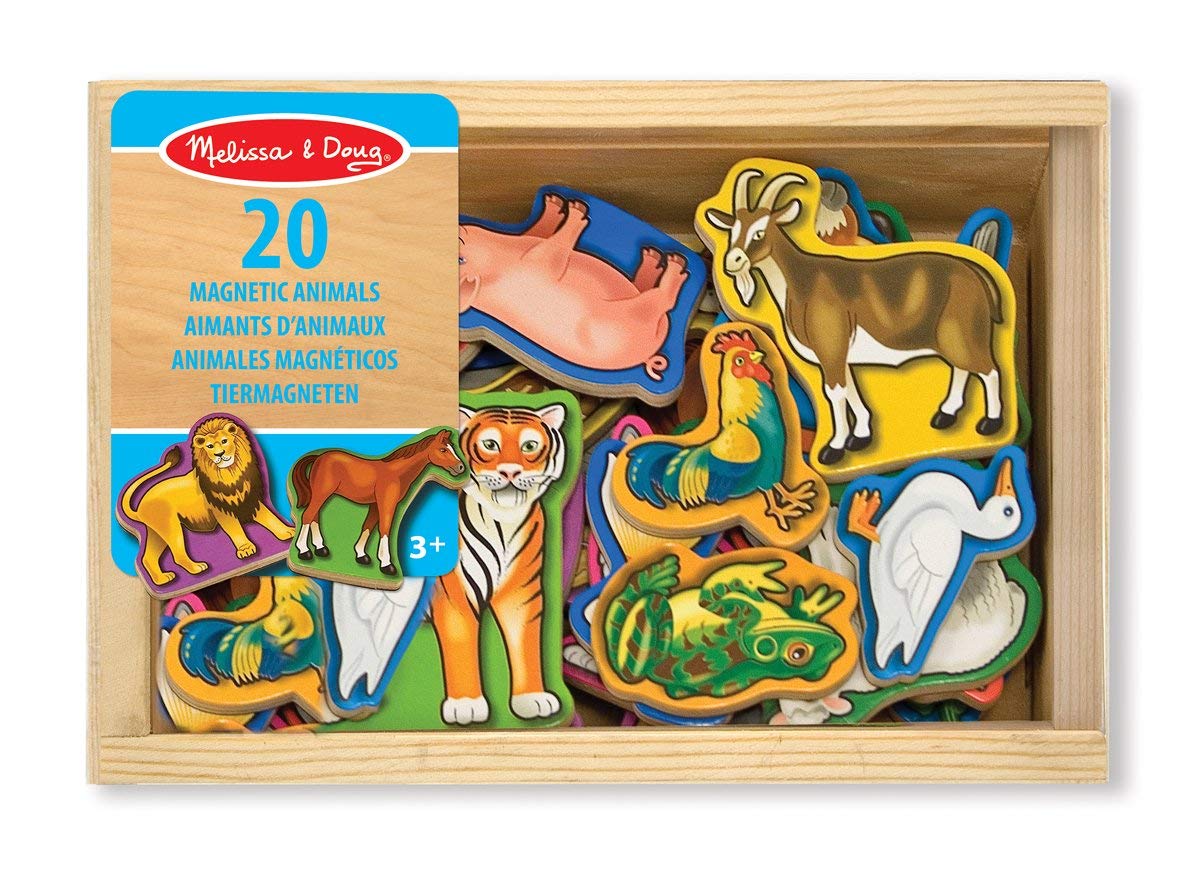10 Stocking Stuffer Ideas to Promote Early Language Development
With Christmas fast approaching, we are busy making our Christmas shopping lists. Here is a list of 10 toys available on amazon.ca that provide great language learning possibilities for toddlers, preschoolers and early school aged children:
It’s 5:00 and you’re scrambling to make dinner. Rather than having your toddler empty your pots and pans cupboard, what about playing with the animal magnets at the bottom of the fridge? These magnets are a great opportunity for sorting items into categories (e.g. can you put all the zoo animals on the fridge door and all the farm animals on the freezer?), talking about similarities and differences (e.g. animals that have fur vs. animals that have feathers). These are also great for promoting storytelling (e.g. what happened when the tiger met the rooster?).
These musical instruments are great for practicing early language skills such as turn-taking (e.g. my turn, your turn) as well as concepts such as fast, slow, loud, quiet. These are great for stockings because they’re small but also easy for younger kids to manipulate independently.
Sure, it’s not exactly gardening season, but why not get the tools for an indoor garden? Gardening and the life cycle of the plant provide so many language learning opportunities. From practicing sequencing concepts (e.g. first we’ll put the soil in, then we’ll put our seed in), to predicting what might happen next (e.g. what do you think will happen if we keep watering our seed and give it some sun light?), there are lots of opportunities for extending early language.
There is a lot going on with these blocks. Children across the infant and preschool years will be able to explore the concepts of ‘in’ and ‘on’ and learning to understand comparative concepts such as big, bigger and biggest. There are lots of opportunities to discuss number concepts, colours, animals, body parts and shapes, while building a tower ‘up’, only to knock it back ‘down’.
Medical kits are fantastic for discussing emotions (e.g. oh no, teddy is sad because he doesn’t feel well), body parts (e.g. dolly hurt her arm) as well as learning specific vocabulary related to going to the doctor.
In our opinion, you can never have too many crayons! Crayons are the ultimate preschool creativity tool, so language opportunities are endless!
We love this one because it’s appropriate for even really young kids who can’t yet play with marble runs or dinky car tracks. This is a good one or developing early choice making skills (e.g. should we put the blue piece or the red piece on?), predicting where the ball will go and working on the concepts of ‘more’, ‘on’ ‘up’ and ‘down’.
Puppets are fantastic for role play. When pretending to be a superhero or a pirate, kids will explore different vocabulary than they might use when engaging in other kinds of play. These are great for practicing turn-taking, and are also a good tool for kids who are more reluctant communicators. Encourage the use of silly voices for the different characters to extend the fun!
We are a fan of gifting books in general, but if Dear Zoo is not yet a part of your child’s library, it’s worth adding! This is one of our favourites because of the descriptive language it employs. Why isn’t a giraffe a good pet? It’s too tall. A lion? Too scary! Extend this book by coming up with other animals or objects that also fit the descriptors from the book (e.g. a tree is also tall), or coming up with your own reasons for why the animals wouldn’t make good pets.
We’ve talked about our love of bath time before- so many possibilities for using vocabulary and discussing concepts that just don’t come up at other times of the day! These water pipes are a fantastic add-on to bath time. Try discussing the similarities and differences between the pipes, whether they make the water move quickly or slowly, how the water moves (e.g. down? to the side?) or create a sequence of pipes and talk about what you think the water will do (e.g. first it will go down, then some of it will go out this side etc.). Practice verbs such as pouring and spinning as well as descriptive words such as quickly, wet and fastest.













